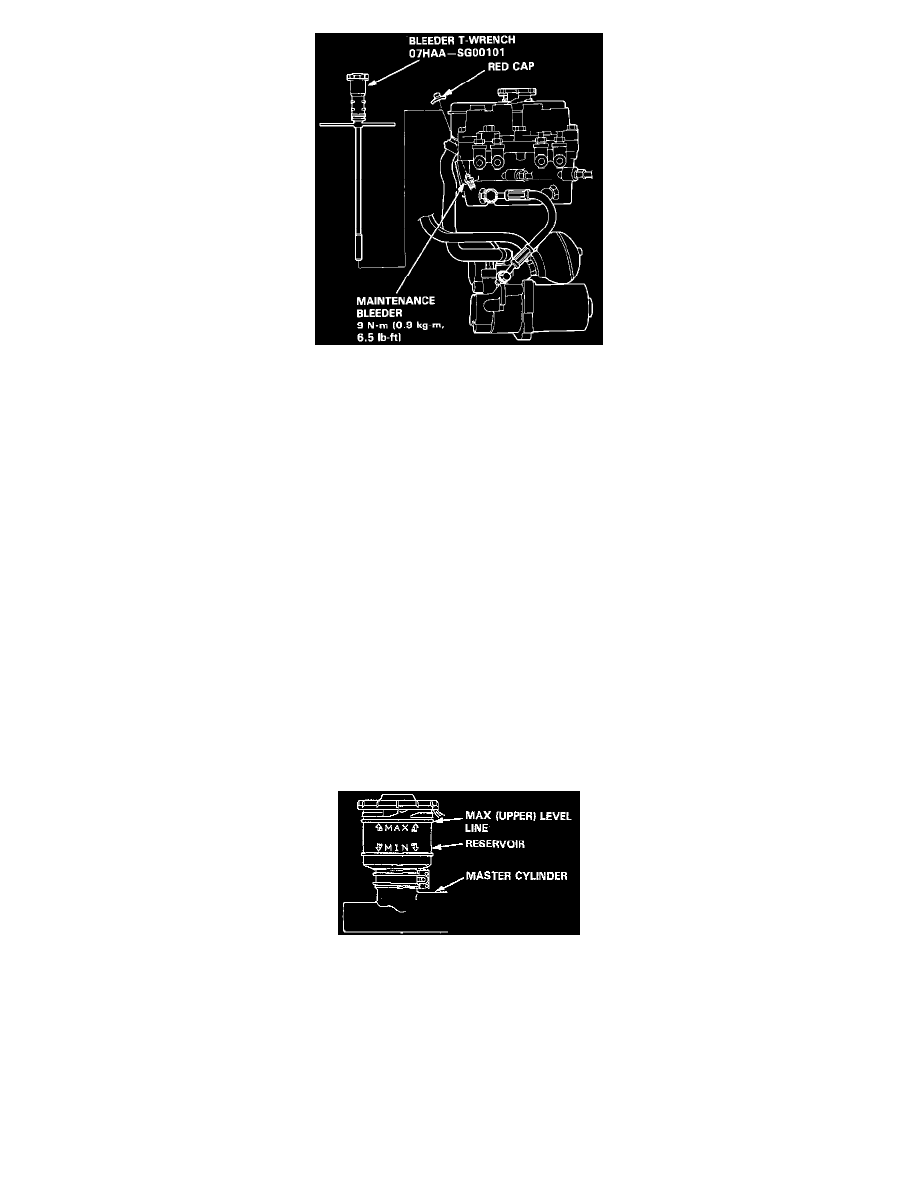Accord SE Coupe L4-2156cc 2.2L SOHC MFI (1997)

Bleeding The Brakes With The Special Tool
5. Bleed high-pressure fluid from the maintenance bleeder with the special tool.
6. Start the engine and allow it to idle for a few minutes, then stop it. Check the fluid level in the modulator reservoir and refill to the MAX level line
if necessary.
7. Turn the Mode Selector switch of the checker to 2.
8. While depressing the brake pedal firmly, push the "Start Test" switch to operate the modulator. There should be kickback on the brake pedal. If
not, repeat steps 5 to 8.
NOTE: Continue to depress the brake pedal firmly when operating the checker.
9. Turn the Mode Selector to 3, 4, and 5. Perform step 8 for each of the test mode positions.
10. Refill the modulator reservoir to the MAX level line and install the reservoir cap.
WARNING: Disconnect the ALB Checker before driving the car. A collision can result from a reduction or complete loss of braking ability, causing
severe personal injury or death.
Without Anti-Lock Brakes
CAUTION:
-
Use only clean Honda Genuine DOT 3 Heavy Duty brake fluid or an equivalent DOT 3 or 4 brake fluid.
-
Do not spill brake fluid on the vehicle, it may damage the paint; if brake fluid does contact the paint, wash it off immediately with water.
NOTE: The reservoir on the master cylinder must be at the MAX (upper) level mark at the start of bleeding procedure and checked after bleeding each
brake caliper. Add clean new fluid from a sealed container as required.
Reservoir MAX Level
1. Make sure the brake fluid level in the reservoir is at the MAX (upper) level line.
2. Have someone slowly pump the brake pedal several times, then apply steady pressure.
